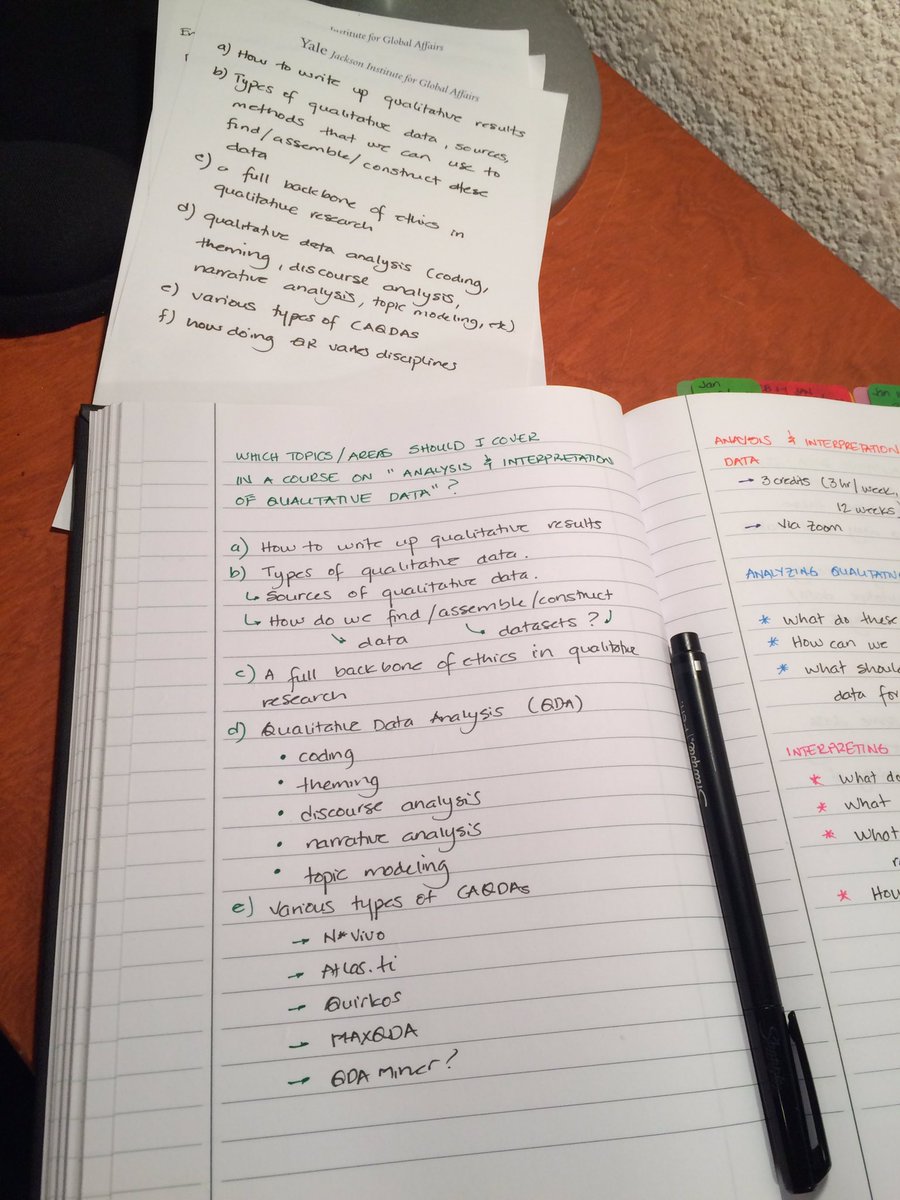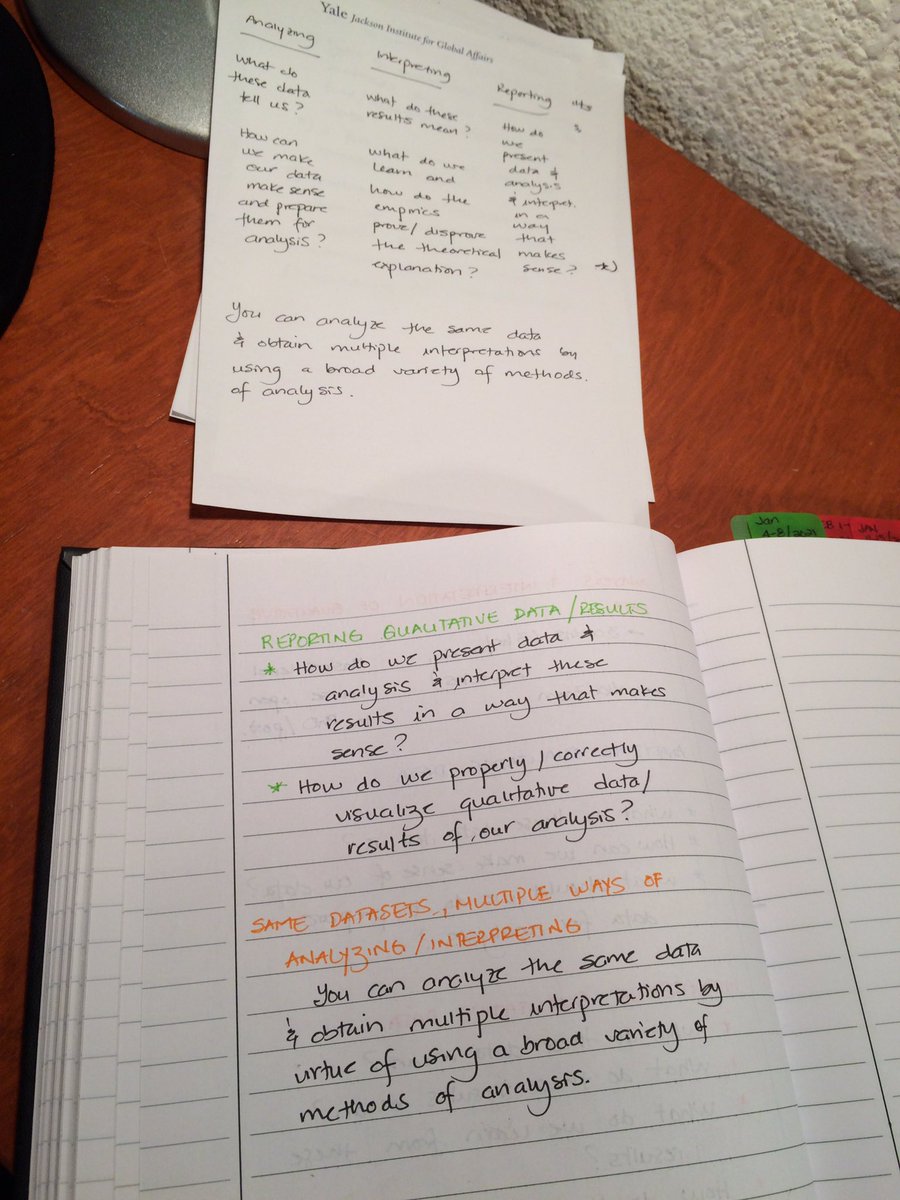
Designing my “Qualitative Data Analysis and Interpretation” course for Fall 2021. While my draft notes are perfectly readable, I like making sense of my ideas by transcribing my scribbles and using different colour fineliners. 

As I switch categories (from “Analysis” to “Interpretation”) I also switch colours. This change helps me maintain conceptual clarity and differentiate between different stages of the qualitative research process. 

Transcribing my drafty notes into my Everything Notebook helps me think and rethink ideas.
As you can see, my transcription isn’t word-by-Word. I found new approaches to organizing my thoughts when copying my notes, and what I’m going to cover becomes clearer to me.
As you can see, my transcription isn’t word-by-Word. I found new approaches to organizing my thoughts when copying my notes, and what I’m going to cover becomes clearer to me.

• • •
Missing some Tweet in this thread? You can try to
force a refresh






